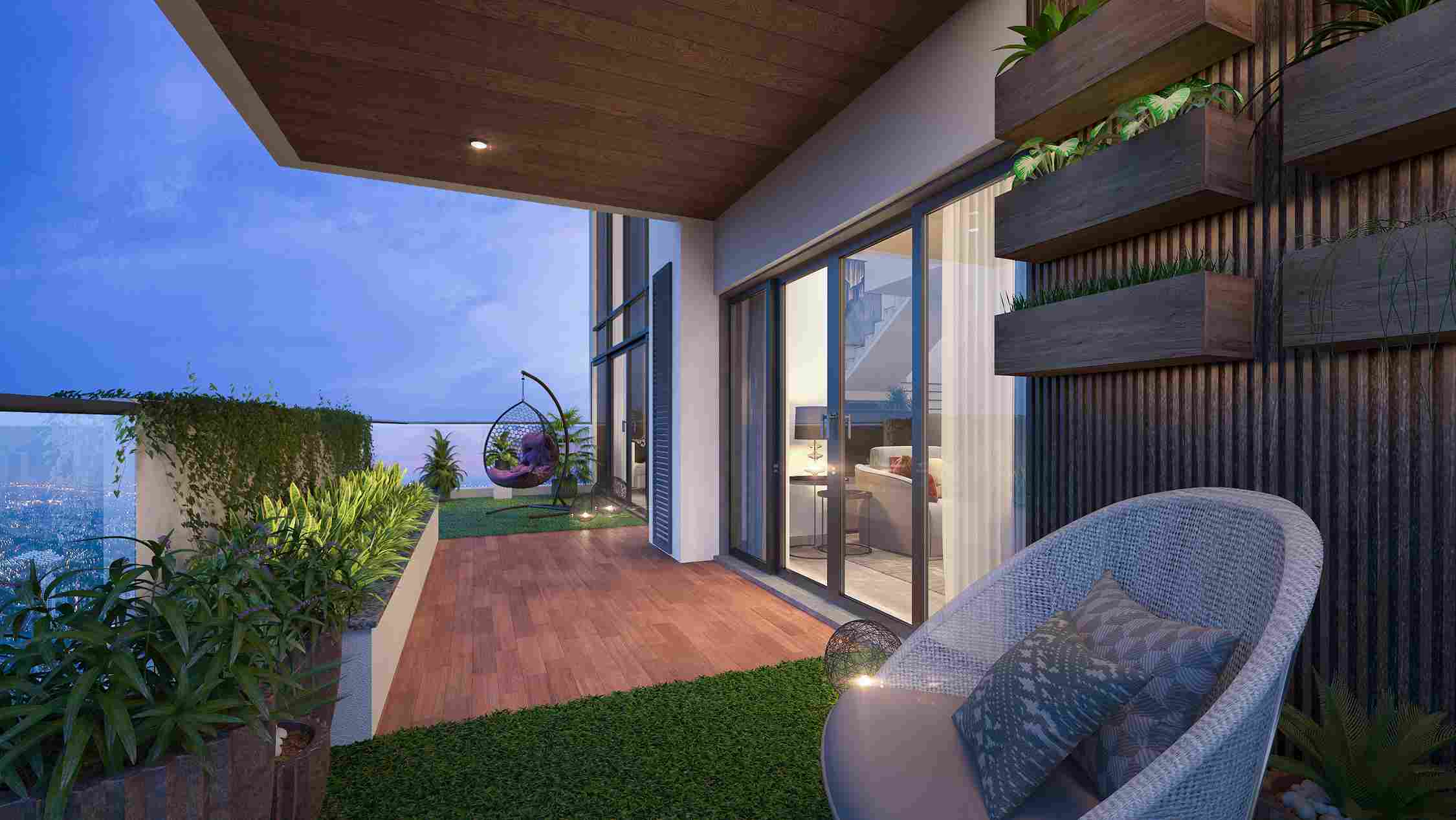Real Estate Industry in Bangladesh: Evolution and the Future
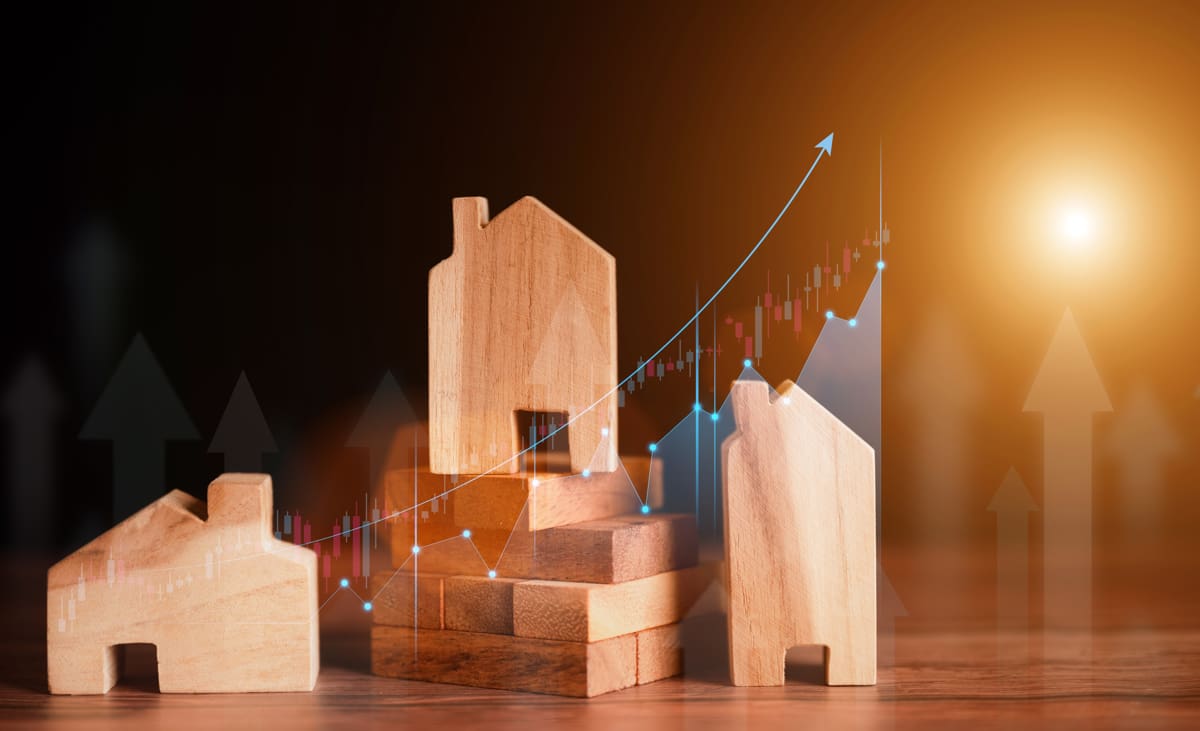
Bangladesh has grown significantly since the 1970s, when the real estate industry first began. The initial period saw the business expand gradually thanks to Bangladesh's rapidly expanding housing and infrastructure sectors.
The huge increase that the real estate sector has had in our country is mainly due to rising demand for better homes, expanding middle-class families, and rising per-capita income.
The Bangladeshi government has made significant efforts to encourage private investment opportunities to assist the expansion of this industry. According to experts, the real estate market will expand over the next several years and play an important role in Bangladesh's transformation into a developed country.
 The Real Estate and Housing Association of Bangladesh (REHAB), the sole real estate trade association in the nation, represents commercial real estate firms and professionals there. REHAB was founded in 1991 by eleven of Bangladesh's largest real estate companies to protect one another's interests and the sector as a whole. The growth of the nation's real estate sector has been significantly helped by REHAB. All the current members came together to draft an agreement, and it gave useful resources and insight into the various stages of growth the nation has gone through throughout time. REHAB members considerably enhance government revenue through registration fees, income taxes, and utility service fees.
The Real Estate and Housing Association of Bangladesh (REHAB), the sole real estate trade association in the nation, represents commercial real estate firms and professionals there. REHAB was founded in 1991 by eleven of Bangladesh's largest real estate companies to protect one another's interests and the sector as a whole. The growth of the nation's real estate sector has been significantly helped by REHAB. All the current members came together to draft an agreement, and it gave useful resources and insight into the various stages of growth the nation has gone through throughout time. REHAB members considerably enhance government revenue through registration fees, income taxes, and utility service fees.
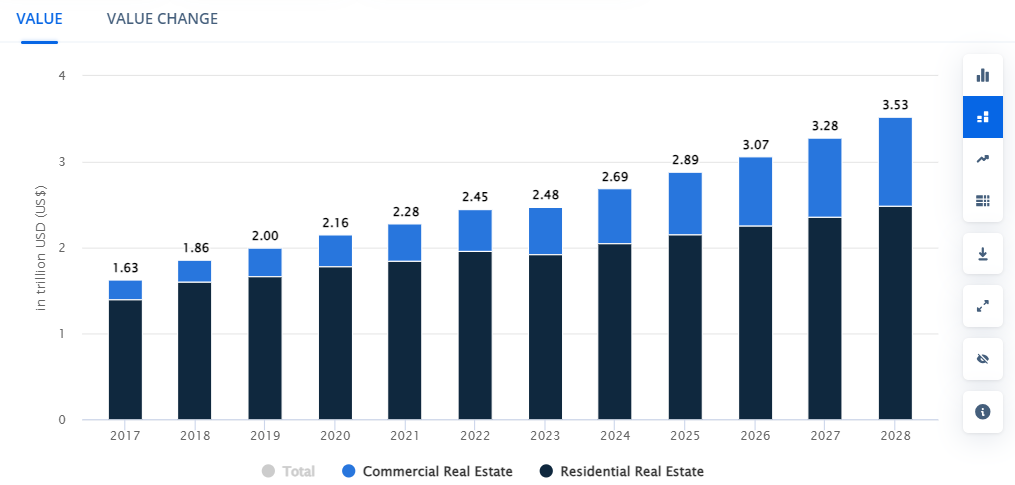 There is currently a 6–8 lakh unit housing demand throughout all major cities in the nation. As Dhaka and Chattogram are home to the bulk of Bangladesh's urban residents, these cities are also the locations of most new real estate construction. In addition to 2 lakh more replacement units and project delays, estimates indicate a demand for 60 thousand homes in just Dhaka.
Dhaka's expansion has been remarkable when compared to other Bangladeshi cities. The demand for plots and apartment buildings is consequently very high. This market's size and huge unmet demand draw in both global and local competitors.
All businesses in the real estate sector fundamentally offer the same services: land and flats. There are businesses that offer both, while some only offer one of the specialties.
However, the accommodation is always the same. The differences between land and flats are made through variations in variety, quality, style, features, and luxury brands.
Despite the fact that there are more than a thousand businesses operating across the nation, only a small number succeed in offering first-rate service to their clientele.
Rupayan City is a fine example of a real estate business that has allowed you to buy condominiums in Uttara’s gated community Rupayan City Uttara along with Villas and Penthouses, where you can lead a life of secured privilege and world-class amenities.
There is currently a 6–8 lakh unit housing demand throughout all major cities in the nation. As Dhaka and Chattogram are home to the bulk of Bangladesh's urban residents, these cities are also the locations of most new real estate construction. In addition to 2 lakh more replacement units and project delays, estimates indicate a demand for 60 thousand homes in just Dhaka.
Dhaka's expansion has been remarkable when compared to other Bangladeshi cities. The demand for plots and apartment buildings is consequently very high. This market's size and huge unmet demand draw in both global and local competitors.
All businesses in the real estate sector fundamentally offer the same services: land and flats. There are businesses that offer both, while some only offer one of the specialties.
However, the accommodation is always the same. The differences between land and flats are made through variations in variety, quality, style, features, and luxury brands.
Despite the fact that there are more than a thousand businesses operating across the nation, only a small number succeed in offering first-rate service to their clientele.
Rupayan City is a fine example of a real estate business that has allowed you to buy condominiums in Uttara’s gated community Rupayan City Uttara along with Villas and Penthouses, where you can lead a life of secured privilege and world-class amenities.
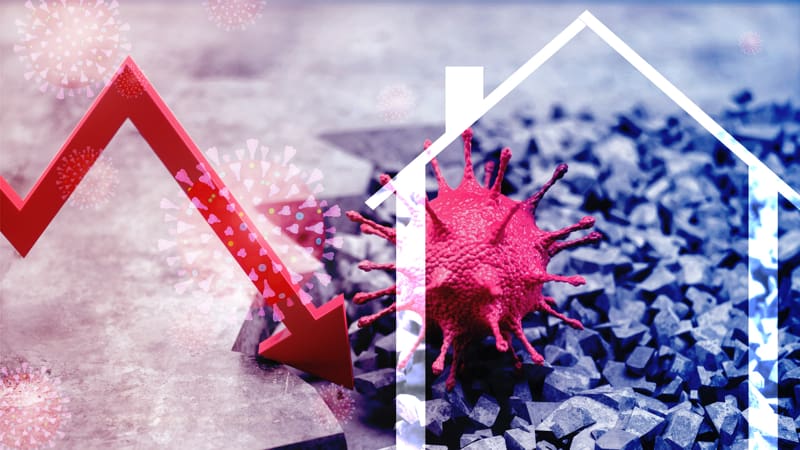 In order to prevent the coronavirus from spreading, the Bangladeshi government implemented several rounds of lockdowns starting in March 2020, which triggered a total financial collapse in the nation. The real estate market suffered as a result of these lockdowns. During the first two quarters of 2020, the entire sector came to a stop.
After the COVID-19 catastrophe, the real estate market recovered because untaxed income could be utilized to purchase houses, lots, and flats without having to be budgeted for in the current fiscal year. The GDP growth rate for Bangladesh is predicted to be 6.8% annually between 2021 and 2025, therefore it won't be long before the real estate market is back to where it was.
As the pandemic scenario started to abate, a new trend in Bangladesh's real estate market arose. Buying Apartments in Dhaka has become quite popular. As a result, the demand for apartments rose in the city as more and more people expressed interest in buying their new homes.
In order to prevent the coronavirus from spreading, the Bangladeshi government implemented several rounds of lockdowns starting in March 2020, which triggered a total financial collapse in the nation. The real estate market suffered as a result of these lockdowns. During the first two quarters of 2020, the entire sector came to a stop.
After the COVID-19 catastrophe, the real estate market recovered because untaxed income could be utilized to purchase houses, lots, and flats without having to be budgeted for in the current fiscal year. The GDP growth rate for Bangladesh is predicted to be 6.8% annually between 2021 and 2025, therefore it won't be long before the real estate market is back to where it was.
As the pandemic scenario started to abate, a new trend in Bangladesh's real estate market arose. Buying Apartments in Dhaka has become quite popular. As a result, the demand for apartments rose in the city as more and more people expressed interest in buying their new homes.
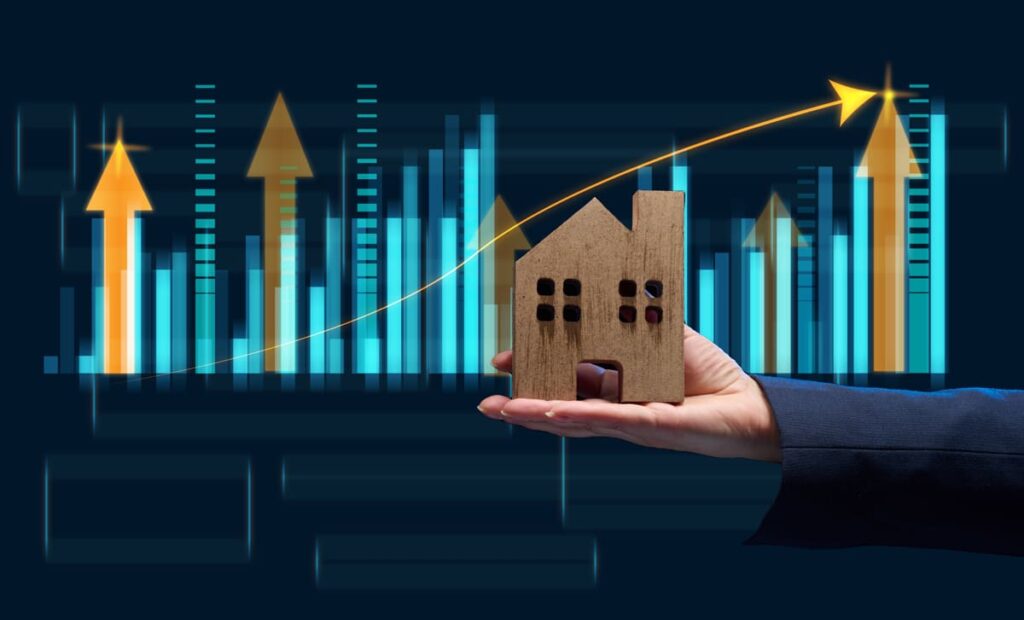 Bangladesh's real estate market is evolving into a significant sector of our economy. This sector of the economy is a significant source of employment, second only to agriculture. According to REHAB, the real estate industry and related industries make up 12% of the GDP.
The real estate industry has generated roughly Tk. 20 billion in trades and Tk. 2 billion in taxable income annually. More than 2 million people are currently employed in the real estate industry and other enterprises. The businesses in this sector have raised GDP on average by 12–14% annually over the last five years.
Bangladesh's real estate market is evolving into a significant sector of our economy. This sector of the economy is a significant source of employment, second only to agriculture. According to REHAB, the real estate industry and related industries make up 12% of the GDP.
The real estate industry has generated roughly Tk. 20 billion in trades and Tk. 2 billion in taxable income annually. More than 2 million people are currently employed in the real estate industry and other enterprises. The businesses in this sector have raised GDP on average by 12–14% annually over the last five years.
Changing Tides: The Evolution and Future Outlook of Bangladesh's Real Estate Sector
The real estate industry plays a major role in the economy of our nation. This industry helps other sectors grow, attracts local and foreign investment, creates jobs, develops unused and neglected land, and directly affects the GDP by building residential and commercial infrastructure. Since the beginning, the real estate industry has continued to grow steadily. This article covers the evolution and future of Bangladesh's real estate market. The real estate sector started to establish itself in the early 1970s, but it didn't really take off until the 1980s. The continued expansion of the real estate sector in Bangladesh has been enabled by the country's quick economic development, rising housing demand, the formation of a middle class, and rising per capita income. It has not been simple for the real estate industry to handle the problem of housing our enormous population during the past 40 years. Only five corporations were active in the real estate market in the 1970s, with most of their attention going into Dhaka's residential growth. Beginning in the early 1980s, the company quickly expanded and truly took off. In the market by 1988, 42 distinct developers were active. Due to the growing need for infrastructure, including roads, bridges, hospitals, retail centers, and other types of infrastructure, Bangladesh saw a significant construction boom in the 1990s. Because of the attractive potential, more and more businesses began to enter this sector. The effect of the real estate sector was evident in Bangladesh's economy's strong association with the country's GDP in the first ten years of the twenty-first century. Demand for homes with more comfort was growing as people were able to steadily raise their available income. International firms needed high-standard workplaces with lots of amenities because there were a lot of investment prospects from other countries. Additionally, it had a significant role in the nation's expanding real estate trend.Real Estate & Housing Association of Bangladesh (REHAB)
 The Real Estate and Housing Association of Bangladesh (REHAB), the sole real estate trade association in the nation, represents commercial real estate firms and professionals there. REHAB was founded in 1991 by eleven of Bangladesh's largest real estate companies to protect one another's interests and the sector as a whole. The growth of the nation's real estate sector has been significantly helped by REHAB. All the current members came together to draft an agreement, and it gave useful resources and insight into the various stages of growth the nation has gone through throughout time. REHAB members considerably enhance government revenue through registration fees, income taxes, and utility service fees.
The Real Estate and Housing Association of Bangladesh (REHAB), the sole real estate trade association in the nation, represents commercial real estate firms and professionals there. REHAB was founded in 1991 by eleven of Bangladesh's largest real estate companies to protect one another's interests and the sector as a whole. The growth of the nation's real estate sector has been significantly helped by REHAB. All the current members came together to draft an agreement, and it gave useful resources and insight into the various stages of growth the nation has gone through throughout time. REHAB members considerably enhance government revenue through registration fees, income taxes, and utility service fees.
The Present Scenario of the Real Estate Industry in Bangladesh
 There is currently a 6–8 lakh unit housing demand throughout all major cities in the nation. As Dhaka and Chattogram are home to the bulk of Bangladesh's urban residents, these cities are also the locations of most new real estate construction. In addition to 2 lakh more replacement units and project delays, estimates indicate a demand for 60 thousand homes in just Dhaka.
Dhaka's expansion has been remarkable when compared to other Bangladeshi cities. The demand for plots and apartment buildings is consequently very high. This market's size and huge unmet demand draw in both global and local competitors.
All businesses in the real estate sector fundamentally offer the same services: land and flats. There are businesses that offer both, while some only offer one of the specialties.
However, the accommodation is always the same. The differences between land and flats are made through variations in variety, quality, style, features, and luxury brands.
Despite the fact that there are more than a thousand businesses operating across the nation, only a small number succeed in offering first-rate service to their clientele.
Rupayan City is a fine example of a real estate business that has allowed you to buy condominiums in Uttara’s gated community Rupayan City Uttara along with Villas and Penthouses, where you can lead a life of secured privilege and world-class amenities.
There is currently a 6–8 lakh unit housing demand throughout all major cities in the nation. As Dhaka and Chattogram are home to the bulk of Bangladesh's urban residents, these cities are also the locations of most new real estate construction. In addition to 2 lakh more replacement units and project delays, estimates indicate a demand for 60 thousand homes in just Dhaka.
Dhaka's expansion has been remarkable when compared to other Bangladeshi cities. The demand for plots and apartment buildings is consequently very high. This market's size and huge unmet demand draw in both global and local competitors.
All businesses in the real estate sector fundamentally offer the same services: land and flats. There are businesses that offer both, while some only offer one of the specialties.
However, the accommodation is always the same. The differences between land and flats are made through variations in variety, quality, style, features, and luxury brands.
Despite the fact that there are more than a thousand businesses operating across the nation, only a small number succeed in offering first-rate service to their clientele.
Rupayan City is a fine example of a real estate business that has allowed you to buy condominiums in Uttara’s gated community Rupayan City Uttara along with Villas and Penthouses, where you can lead a life of secured privilege and world-class amenities.
The Effects of COVID-19 on the Real Estate Market and Their Consequences
 In order to prevent the coronavirus from spreading, the Bangladeshi government implemented several rounds of lockdowns starting in March 2020, which triggered a total financial collapse in the nation. The real estate market suffered as a result of these lockdowns. During the first two quarters of 2020, the entire sector came to a stop.
After the COVID-19 catastrophe, the real estate market recovered because untaxed income could be utilized to purchase houses, lots, and flats without having to be budgeted for in the current fiscal year. The GDP growth rate for Bangladesh is predicted to be 6.8% annually between 2021 and 2025, therefore it won't be long before the real estate market is back to where it was.
As the pandemic scenario started to abate, a new trend in Bangladesh's real estate market arose. Buying Apartments in Dhaka has become quite popular. As a result, the demand for apartments rose in the city as more and more people expressed interest in buying their new homes.
In order to prevent the coronavirus from spreading, the Bangladeshi government implemented several rounds of lockdowns starting in March 2020, which triggered a total financial collapse in the nation. The real estate market suffered as a result of these lockdowns. During the first two quarters of 2020, the entire sector came to a stop.
After the COVID-19 catastrophe, the real estate market recovered because untaxed income could be utilized to purchase houses, lots, and flats without having to be budgeted for in the current fiscal year. The GDP growth rate for Bangladesh is predicted to be 6.8% annually between 2021 and 2025, therefore it won't be long before the real estate market is back to where it was.
As the pandemic scenario started to abate, a new trend in Bangladesh's real estate market arose. Buying Apartments in Dhaka has become quite popular. As a result, the demand for apartments rose in the city as more and more people expressed interest in buying their new homes.
Changing Market Trends
Studio Apartment
The real estate sector noticed a new tendency after the Covid-19 pandemic. People who were considering studio apartments made up a new consumer base. These apartments typically consist of one large room with a bedroom, dining area, a moderately equipped kitchen, and restrooms that are between 250 and 1000 square feet in size. Furthermore, the utilization of upscale commercial properties is on the rise, primarily because they serve as prestigious business addresses. Consequently, there is a noticeable uptick in the availability of commercial spaces for sale in Dhaka.Concrete Blocks
By 2025, all construction projects will be required to use concrete blocks, according to the Ministry of Environment, Forests, and Climate Change. Red brick production generates dangerous gasses that significantly contribute to air pollution, ozone layer loss, and global warming. Concrete blocks, as compared to standard bricks, have been proven to have many more benefits. In addition to being significantly safer than regular bricks, hollow bricks are fire-resistant.Steel Structure Buildings
Prefabricated steel buildings are becoming more prevalent in urban areas since they are more practical and secure for business entities. It takes extremely little time to construct and is more earthquake-resistant than other building types.Online Presence
The service component of many real estate development companies has been completely digitized, allowing customers to quickly view all of the features offered by a given business. These businesses have full websites that allow visitors to see their portfolio, ready apartments in Dhaka or other cities around the nation, and apartments that are still being built. A large number of potential purchasers have benefited from the virtual presence in their decision-making process.What the Real Estate Market Is Currently Worth?
The estimated value of Bangladesh's real estate market is 58,000 Crore BDT, growing at a 15–17% yearly rate. In the last five years, the availability of 1200–1400 square foot apartments has increased by 39%. Bangladesh's two largest cities, Dhaka and Chittagong, both have booming real estate markets. There were two main expansions in Bangladesh's real estate market: the first from 2006 to 2009 and the second from 2015 to 2018. Between 2022 and 2025, we might observe another acceleration. The number of approved residential zones across Bangladesh has increased dramatically over the last ten years. Additionally, real estate businesses now develop 42% of the residences in Dhaka.Contribution of the Real Estate Industry to the Economy of Bangladesh
 Bangladesh's real estate market is evolving into a significant sector of our economy. This sector of the economy is a significant source of employment, second only to agriculture. According to REHAB, the real estate industry and related industries make up 12% of the GDP.
The real estate industry has generated roughly Tk. 20 billion in trades and Tk. 2 billion in taxable income annually. More than 2 million people are currently employed in the real estate industry and other enterprises. The businesses in this sector have raised GDP on average by 12–14% annually over the last five years.
Bangladesh's real estate market is evolving into a significant sector of our economy. This sector of the economy is a significant source of employment, second only to agriculture. According to REHAB, the real estate industry and related industries make up 12% of the GDP.
The real estate industry has generated roughly Tk. 20 billion in trades and Tk. 2 billion in taxable income annually. More than 2 million people are currently employed in the real estate industry and other enterprises. The businesses in this sector have raised GDP on average by 12–14% annually over the last five years.

